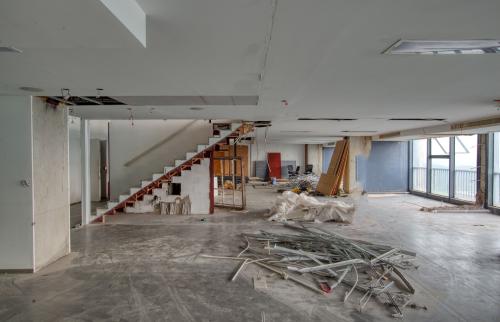As the second tranche of federal American Rescue Plan Act (ARP) funding flows to municipalities around the country, new realities are surfacing about cities’ and counties’ readiness to execute on this unprecedented amount of money.
Not surprisingly, the picture is mixed. Under pressure to expedite funding allocations, local public officials must balance acute, pandemic-related relief needs with strategic, longer-term recovery expenditures. To achieve the latter, they must build internal capacity and strengthen nonprofit partners.
Launched this spring by Brookings Metro in partnership with three communities, the Transforming Cities Lab is helping communities navigate the practical and political challenges of coordinating with nonprofits—offering promising solutions to overcome these challenges and deliver more transformative economic change.
The nonprofit sector is a challenging but essential partner to the public sector
The Transforming Cities Lab is a peer learning project aimed at helping places build civic capacity and infrastructure to maximize use of federal dollars in more strategic, sustainable, and equitable ways. And it has revealed that identifying spending priorities upfront is a necessary but not sufficient component. While a vast majority of local leaders are endeavoring to meet this moment, municipalities—even larger ones—lack the capacity to plan or carry out longer-term strategic investments without nonprofit or other external partners. This challenge is particularly acute in Midwestern legacy cities, where public and nonprofit sectors have been accustomed to operating with an austerity mindset and competing for scarce dollars.
Nonprofit organizations are indispensable partners for the public sector to maximize federal dollars and leverage funds for inclusive, systemic change. Yet, to make the most of today’s historic investment opportunities, cities and nonprofits must overcome two preexisting conditions that could hinder such an approach: functionality and equity.
First, functionality. As an example, workforce training and economic development ecosystems—both essential to inclusive growth—are often highly fragmented and lack basic functionality. This in turn intensifies local government and nonprofit coordination challenges. In places transitioning from older industrial to “new” economies (e.g., Cleveland, Detroit), organizations have been operating on a shoestring budget for decades, and nonprofit ecosystems were not designed to intake large-scale, one-time investments and ensure they have durable positive impact.
Second, equity. Paradoxically, while municipalities need to rely more heavily on nonprofit partners, nonprofits are also competing for public funding. In this process, not all nonprofit organizations are on equal footing in angling for these new funds. For instance, as they compete for funding, smaller, grassroots nonprofits geared toward serving disadvantaged populations are often crowded out by larger, high-capacity nonprofits. These larger nonprofits typically have long-standing constituencies and are better able to navigate compliance requirements and other strings tied to federal dollars.
So, faced with the task of allocating the largest pots of public funds in modern American history, already-stretched public entities may also be bombarded with competing nonprofit requests. This dynamic can create civic tension and overwhelm efforts to craft citywide strategies, prioritize remaining ARP dollars, or set the highest and best uses for future federal dollars, such as Infrastructure Investment and Jobs Act (IIJA) funds.

The public sector needs to build capacity and strengthen nonprofit sector partners
Notwithstanding the complications, nonprofits sorely need capital infusions to achieve greater impact, and local governments need nonprofit partners to ensure ARP funds deliver results for residents and communities. This symbiotic relationship presents an unexpected opportunity to set places up for long-term success. An emerging paradigm, indirectly encouraged by this new flow of funds, incentivizes local partners to: invest in their own capacity for the long term; use funds and new partnerships to drive systemic change; and move resources to strengthen the nonprofit network.
Localities are by and large getting an “A” for effort in establishing priorities for these new dollars, but to maximize their potential, they need to extend their capacity by tapping the nonprofit sector. For instance, Detroit established 15 spending priorities that run the gamut from blight remediation to addressing the digital divide. In Cleveland, the new mayor recently issued a strategic blueprint outlining 10 priorities for the city. But both places are contending with ways to ensure that these intended investments come to full fruition.
Small to medium-sized cities also stepped up to establish priorities from the outset, even as they struggle with capacity to address regulatory and compliance requirements or access competitive grant dollars. The Toledo, Ohio Recovery Plan, for example, allocated almost $181 million across five buckets: healthy neighborhood investments; job creation and economic development; parks; housing; and revenue replacement. Canton, Ohio is deploying new funds to launch innovative youth employment programs, including offering students payments to make up school credits lost during the pandemic and rebates to employers hiring students over the summer.
However, to execute on these new priorities in places large and small, investing in capacity is critical for hiring staff and forming requisite nonprofit partnerships with clear terms of engagement. The Transforming Cities Lab has shown that these partnerships are valuable byproducts of this era of unprecedented public funds. Partnerships between nonprofits and the public sector also have the potential to better leverage other funding streams such as philanthropy, as well as future public dollars such as those from the IIJA. Without these new partnerships, legacy issues—nonprofit politics, less-than-functional ecosystems, and inequities in serving populations—can undercut local leaders’ ability to launch and sustain transformative programs, not to mention the political will to do so.

Emerging paradigms between nonprofits and the public sector
Interesting partnerships between nonprofits and the public sector are already emerging. One involves the role of an internal advisory or a third-party entity that monitors existing ecosystems, advises municipalities on systems upgrades and fixes, and aids in program execution. Cleveland’s new Center for Economic Recovery appears to take such a broad perspective, adding capacity to the city to enable greater alignment and more strategic thinking. The Center is aspiring to typify a Transforming Cities Lab output—called a “coordination hub”—in which nonprofits and other stakeholders collaborate to prioritize and direct ARP and other federal funding to local needs. For example, the Center, as a city-staffed entity with a defined mission of guiding ARP spending strategies, is designing an integrated development plan that takes a cross-cutting approach to community and economic development. While in its early stages, the approach aims to tie a regional tradeable sectors strategy to new place-based initiatives that address multiple distressed neighborhoods in the city—an integrated approach that could be game-changing for both the city and its metro area. Of course, the Cleveland City Council still must agree on and approve ARP allocations to support this kind of initiative. But prospects are looking positive.
Chicago’s Civic Consulting Alliance, which has served the city and surrounding Cook County as a monitor and advisor for several decades in different forms, is a third-party entity that takes a similarly strategic perspective, collecting private sector expertise and pro bono investments to address broader challenges of government and municipal management.
In Southeast Michigan, another example of a new paradigm involves Wayne County (Detroit) and a nonprofit stepping up together with the recent launch of the Wayne County Small Business Hub. Wayne County, in conjunction with the local philanthropy-driven New Economy Initiative serving metro area Detroit, launched a $54 million fund that exemplifies the possibilities of nonprofit-public sector partnership. The Hub will provide technical assistance to new and existing small minority- or women-owned businesses that will diversify the supply chain. The Hub grew out of data analysis tracking how Detroit BIPOC businesses access technical assistance and other supports and how to extend that network and support to places throughout the county with large minority populations. Particularly, the Hub is meant to help new and existing small businesses compete for contracts for infrastructure projects generated by ARP and IIJA funds. Other positive long-term ramifications are a more functional nonprofit ecosystem that, in turn, could also engender an increased pipeline and demand for workers.
A third example is federal funds being used to amplify an already well-functioning ecosystem. Building on existing cross-jurisdictional collaboration around workforce training, the city of Saint Paul, Minn. and Ramsey County are channeling ARP dollars into a new program, Right Track Plus, which prepares Covid-impacted young adults for new careers through part-time internships, mentorship, career counseling, and professional development opportunities. The two localities are also considering ways additional investments (from ARP and IIJA funds) can further enhance the existing ecosystem.
These examples illustrate that it’s not too late for public sector entities to augment their capacity and fortify the nonprofit network through targeted, yet different forms of intermediaries to sustain an equitable impact of federal dollars. Timing is important, since funds must be allocated by the end of 2024 and spent by the end of 2026. But these investments will continue to bear fruit. Once federal coffers run dry and the dollars have been disbursed, the nonprofit sector can be a critical watchdog of these funds and a caretaker of programs, in addition to equalizing the societal benefits. Philanthropy—a third leg of the new paradigmatic stool—also plays a key role in funding and building nonprofit intermediary capacity and as a systems-change partner catalyzing new ways of doing business to seize this federal moment. We’ll have more to say about philanthropy in a future Transforming Cities Lab blog.
Photo credit: City of Detroit, Ramsey County
The Brookings Institution is committed to quality, independence, and impact.
We are supported by a diverse array of funders. In line with our values and policies, each Brookings publication represents the sole views of its author(s).




Commentary
Nonprofits’ critical role in deploying federal investments: Observations from the Transforming Cities Lab
July 6, 2022